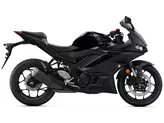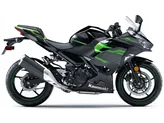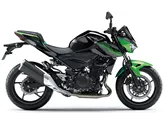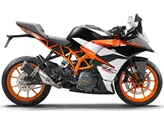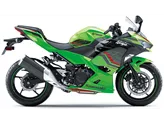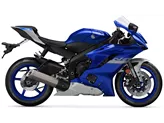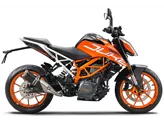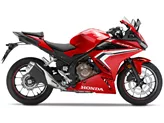Kawasaki Ninja 400 2018 vs. Kawasaki Z 300 2015
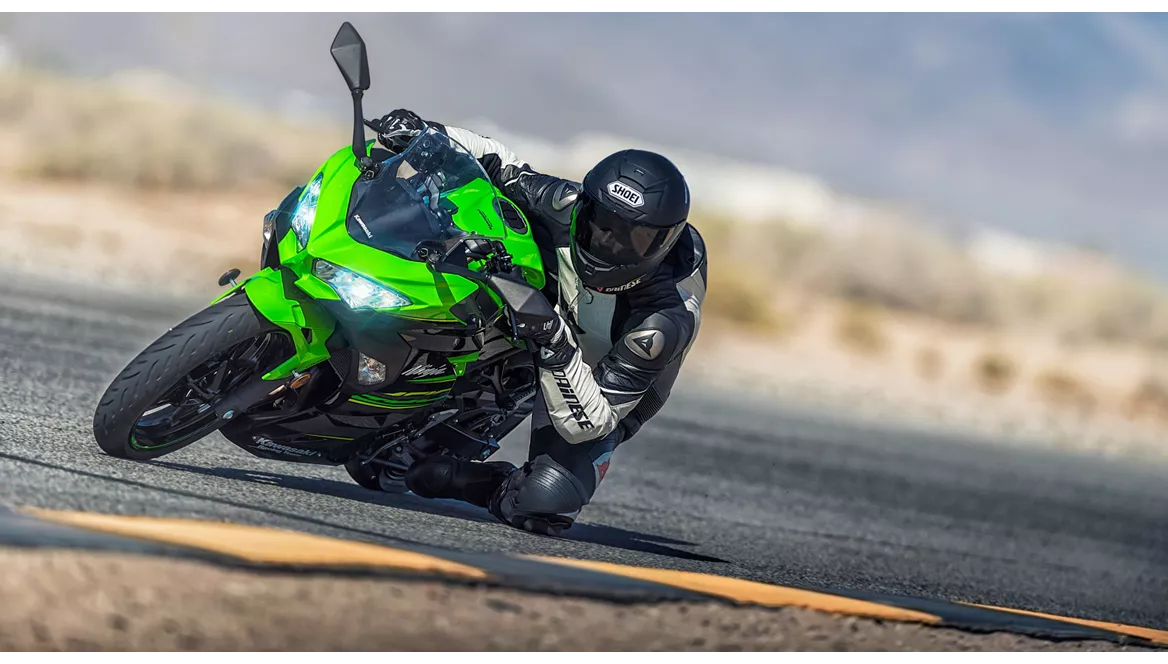
Kawasaki Ninja 400 2018

Kawasaki Z 300 2015
Přehled - Kawasaki Ninja 400 2018 vs Kawasaki Z 300 2015
The Kawasaki Ninja 400 2018 and the Kawasaki Z 300 2015 are both impressive motorcycles with their own unique features and strengths.
Starting with the technical specifications, both models have an in-line engine type, but the Ninja 400 has a larger bore of 70 mm compared to the Z 300's 62 mm. The stroke of the Ninja 400 is also longer at 51.8 mm, while the Z 300 has a stroke of 49 mm. In terms of engine power, the Ninja 400 comes out on top with 45 HP, while the Z 300 has 39 HP. The Ninja 400 also has a higher torque of 38 Nm compared to the Z 300's 27 Nm. The compression ratio of the Ninja 400 is 11.5, while the Z 300 has a compression ratio of 10.6. Both models have 2 cylinders and 4 valves per cylinder, as well as liquid cooling. However, the Ninja 400 has a larger displacement of 399 ccm, while the Z 300 has a displacement of 296 ccm.
Moving on to the chassis, both models have a steel frame. The Ninja 400 has a double piston front brake with petal technology, while the Z 300 also has a double piston front brake with petal technology.

Kawasaki Ninja 400 2018
In terms of dimensions and weights, both models have a front tire width of 110 mm and a front tire diameter of 17 inches. The Ninja 400 has a rear tire width of 150 mm and a rear tire diameter of 17 inches, while the Z 300 has a rear tire width of 140 mm and a rear tire diameter of 17 inches. The Ninja 400 has a wheelbase of 1370 mm, while the Z 300 has a slightly longer wheelbase of 1405 mm. Both models have a seat height of 785 mm. The Ninja 400 has a kerb weight (with ABS) of 168 kg, while the Z 300 has a slightly heavier kerb weight (with ABS) of 170 kg. The Z 300 also has a larger fuel tank capacity of 17 liters, compared to the Ninja 400's 14 liters.
Now let's discuss the strengths and weaknesses of each model. The Ninja 400 has a chassis suitable for sporty use, making it ideal for those who enjoy a more aggressive riding style. Its low weight and effortless handling make it easy to maneuver, while the engine provides a smooth response. The relaxed and confidence-enhancing seating position adds to the overall comfort of the bike. Additionally, the Ninja 400 features LED headlights, which improve visibility and safety.

Kawasaki Z 300 2015
On the other hand, the Z 300 has a more adult look and boasts a high-quality finish. Its high-revving engine delivers a thrilling riding experience, and the comfortable seating position makes long rides more enjoyable. The stable brake provides reliable stopping power, and the easy-to-read, complete cockpit ensures that all necessary information is readily available. Furthermore, the Z 300 has a low fuel consumption, making it a cost-effective option for riders.
However, both models have their weaknesses. The Ninja 400's brake and clutch levers are not adjustable, which may be a drawback for some riders. Additionally, riders over 180cm tall may experience an enormously loud wind noise with the original windshield. On the other hand, the Z 300 has a very unobtrusive sound, which may not appeal to those seeking a more aggressive exhaust note. The engine of the Z 300 only starts when idling, which may be inconvenient for some riders.
In conclusion, both the Kawasaki Ninja 400 2018 and the Kawasaki Z 300 2015 are excellent motorcycles with their own unique strengths and weaknesses. The Ninja 400 offers a sportier riding experience with its powerful engine and agile handling, while the Z 300 provides a more comfortable and fuel-efficient option. Ultimately, the choice between the two models will depend on the rider's preferences and intended use of the motorcycle.
Technické údaje Kawasaki Ninja 400 2018 ve srovnání s Kawasaki Z 300 2015
Výhody a nevýhody ve srovnání
Výhody a nevýhody ve srovnání
Kawasaki Ninja 400 2018

Celkově lze model Ninja 400 označit za dokonalý vstup do světa supersportů. Větší výkon u modelu A2 neseženete, vzhled napovídá o mnohem větším výkonu, vozidlo je hravé na ovládání, je ve všech ohledech shovívavé a přesto umožňuje opravdu sportovní styl jízdy. Ti, kteří měli oprávněné obavy z nedostatku výkonu u různých strojů s objemem 250 ccm, se nyní již nemají na co vymlouvat. Ninja 400, je dobře, že tě máme!
Kawasaki Z 300 2015
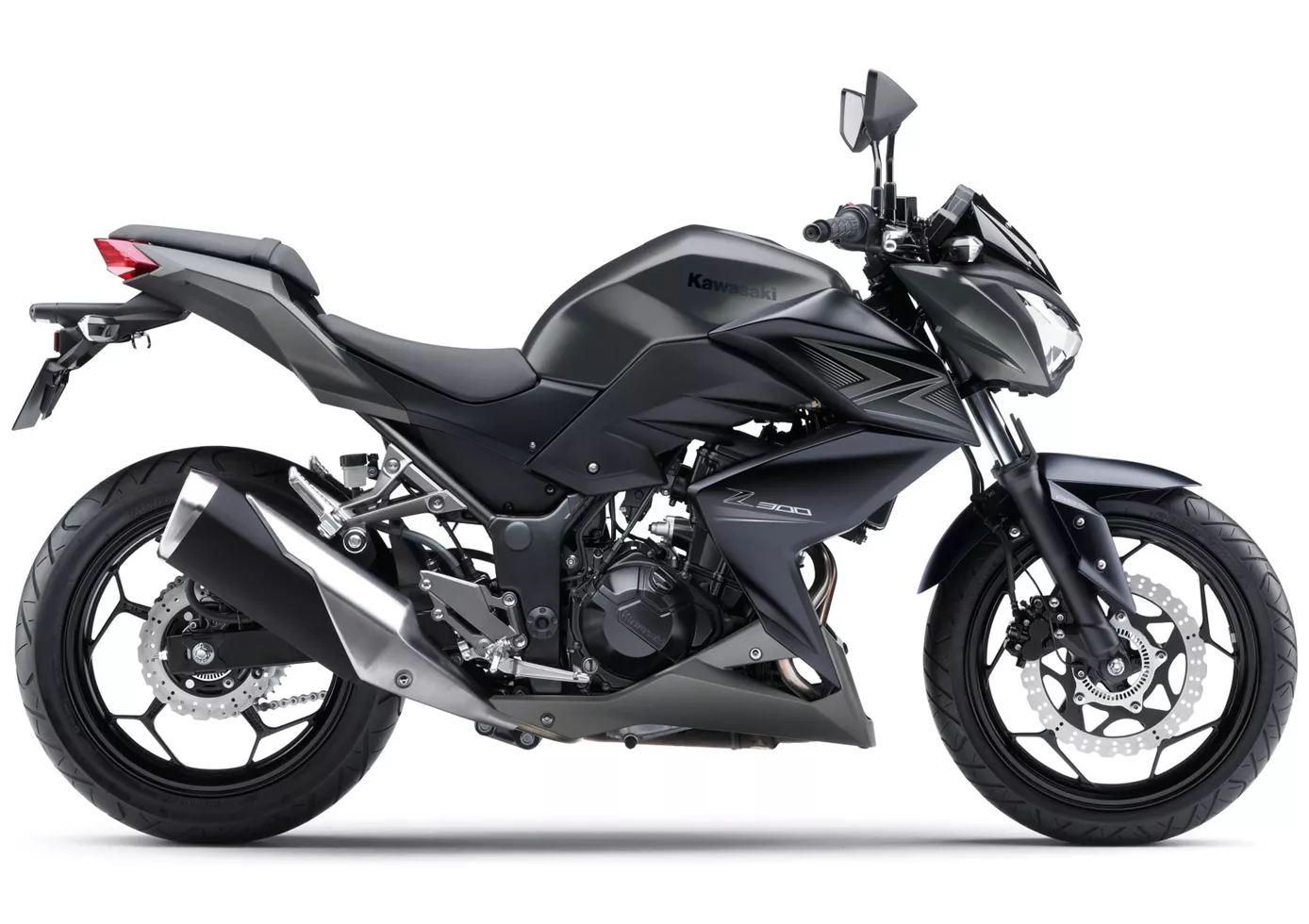
Díky skvělému designu Kawasaki Z300, který je velmi podobný designu její starší sestry Z800, vypadá motocykl velmi dospěle. Stabilní brzdový systém a přehledný kokpit s analogovým otáčkoměrem a všemi potřebnými prvky do této image velmi dobře zapadají. Díky hmotnosti 170 kg připravené k jízdě je motocykl mimořádně snadno ovladatelný a hravý. Motor odhaluje svůj potenciál až ve vyšším pásmu otáček, ale ochotně se vytáčí a vyvolává chuť ke sportovní jízdě. Pouze komfortně orientovaný podvozek nedokáže zcela vyhovět radikálně sportovním požadavkům - to je však u základního motocyklu zcela legitimní a pochopitelné.
Srovnání cen průměrná tržní cena Kawasaki Ninja 400 vs Kawasaki Z 300
There are a few key differences between a Kawasaki Ninja 400 2018 and a Kawasaki Z 300 2015. There are the same number of bikes of both models available on the 1000PS.de marketplace, specifically 10. It takes less time to sell a Kawasaki Ninja 400 with 105 days compared to 111 days for a Kawasaki Z 300. Since model year 2018 1000PS.de editors have written 9 reviews for the Kawasaki Ninja 400 and 5 reviews for the Kawasaki Z 300 since model year 2015. The first review for the Kawasaki Ninja 400 was published on 11/22/2017 and now has more than 44,300 views. This compares to more than 59,800 views for the first review on Kawasaki Z 300 published on 11/4/2014.


